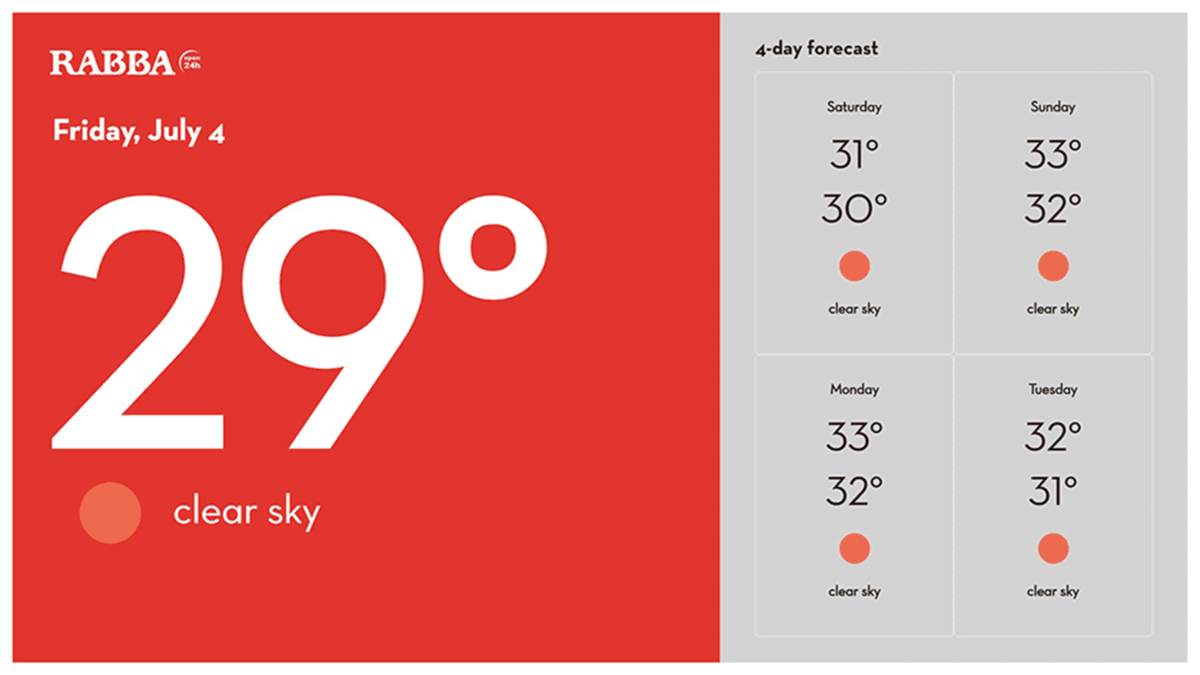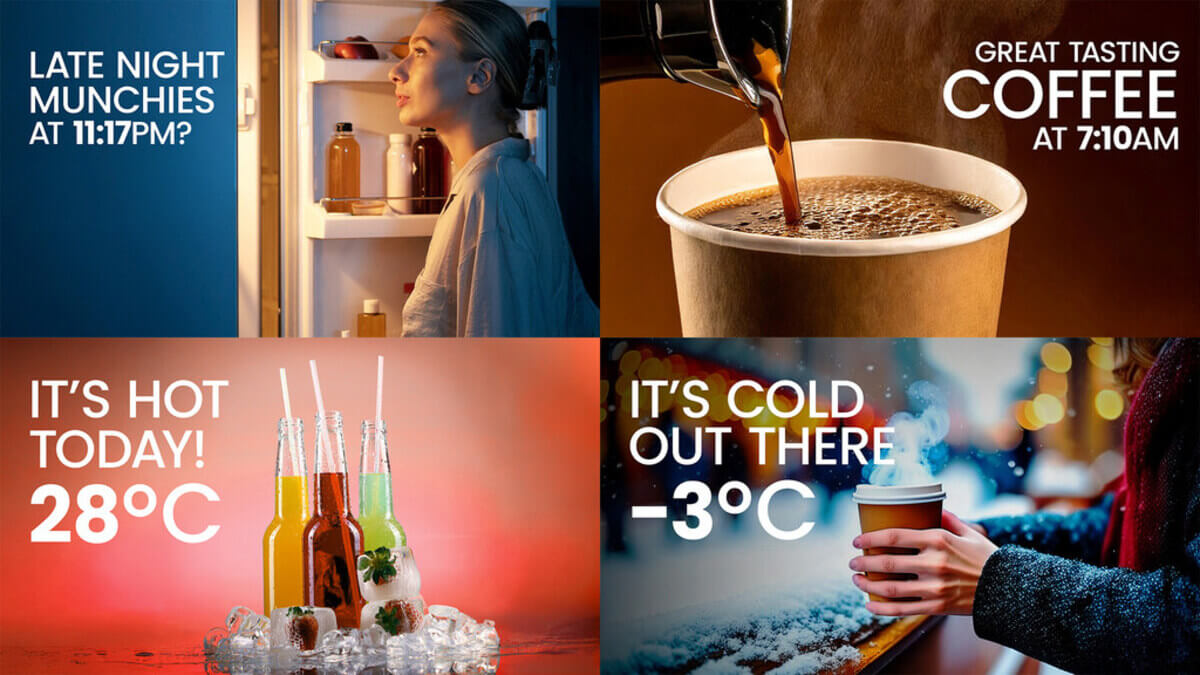Digital Out of Home (DOOH) advertising is shifting fast, and Adapt Media is leading the charge. Our new network of time and weather based screens at INS Market, Hasty Market, and Rabba Fine Foods isn’t just useful content for shoppers. It’s a smart foundation for the future of retail media. These screens are built to evolve, from showing real time conditions to triggering context aware campaigns that drive results.
What is Contextual DOOH Advertising?
Contextual DOOH advertising uses real-time data such as weather, time, location, or audience demographics to display relevant digital ads on public screens. This approach increases engagement by tailoring messages to situational context, maximizing relevance and impact for viewers.
In the DOOH space, that means a screen in front of a store can adjust creative in real time, promoting hot drinks during a cold snap or cold beverages when temperatures rise above 22°C.
Why it works:
- It feels personal: Consumers are more likely to engage with ads that match their immediate needs
- It drives foot traffic: Relevance encourages impulse buys, especially in convenience retail
· It delivers ROI: Context aware ads have been shown to increase store visits and brand lift
Screens in common areas, near food courts, or in high traffic zones deliver impressions where people shop.
Dynamic DOOH Drives Significant Consumer Action
A study by the Out of Home Advertising Association of America (OAAA) and The Harris Poll found that:
- 76% of consumers have taken action after seeing a DOOH ad
- 80% are more likely to act when the ad is entertaining or visually appealing
- 81% find weather responsive ads highly relevant and useful
· 93% of those who visited a business after seeing a directional DOOH ad made a purchase
Unlocking the Power of Time and Weather Based Dynamic Ads
Adapt Media’s digital screen network across INS Market, Hasty Market, and Rabba Fine Foods is fully capable of running dynamic programmatic campaigns triggered by real time conditions. Whether it’s time of day or changes in weather, brands can now deliver relevant, localized messages right at the point of sale.
With the right creative, these screens can shift automatically based on the customer’s environment, making convenience retail even more responsive to real world moments.
What are Examples of Contextual DOOH?

Time of Day Triggers
- Morning (6 AM to 10 AM): Promote coffee, breakfast items, and energy drinks
- Afternoon (12 PM to 3 PM): Feature meal deals, snacks, and bottled beverages
- Evening (9 PM to midnight): Highlight indulgent treats, late night offers, or delivery partnerships
Weather Based Triggers
- Cold Weather (below 0°C): Display hot drinks, soups, or cozy seasonal snacks
- Hot Weather (above 22°C): Promote chilled drinks, popsicles, or sunscreen
Why Media Buyers and Brand Managers Should Care
- You get unmatched relevance at point of sale, when buying decisions are made
- You control messaging by daypart or weather trigger, with real time flexibility
- You see results through Adapt’s ability to close the loop with mobile retargeting and attribution
Frequently Asked Questions about Contextual DOOH
How does programmatic DOOH differ from traditional DOOH in campaign execution and targeting?
Programmatic DOOH automates ad buying using data and algorithms, enabling real-time targeting and flexible campaign execution. Traditional DOOH relies on manual bookings and fixed schedules. Programmatic DOOH allows dynamic content delivery based on triggers like time, weather, or location, while traditional DOOH offers limited targeting options.
What types of real-time data, beyond time and weather, can be used to trigger DOOH campaigns?
DOOH campaigns can use real-time data such as traffic density, audience demographics, social media trends, sports scores, stock market updates, and public transit data. These triggers help tailor messages to current conditions, increasing relevance and engagement beyond just time and weather inputs.
How is the effectiveness of DOOH campaigns measured and attributed to in-store or online actions?
The effectiveness of DOOH campaigns is measured using footfall tracking, mobile location data, online conversions, and sales lift analysis. Attribution is linked through geofencing, device IDs, and matched purchase behaviour to connect exposure to in-store visits or digital actions like website visits and app downloads.
Learn more about tracking DOOH campaign using Datalytica.
How can DOOH campaigns maintain privacy while delivering targeted ads?
DOOH campaigns maintain privacy by using anonymized data, aggregated audience insights, and GDPR-compliant data sources. Targeting is based on trends and patterns rather than individual identity. Technologies like device ID hashing and opt-in location tracking ensure user data is protected while still enabling relevant ad delivery.
Ready to Activate Contextual Campaigns in Retail
Adapt Media’s national retail DOOH network gives advertisers access to thousands of screens in high traffic convenience locations. These screens support time and weather based creative that delivers real time relevance.

